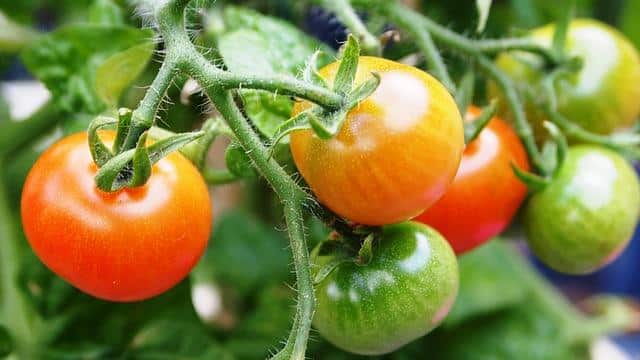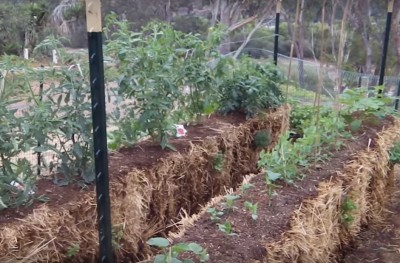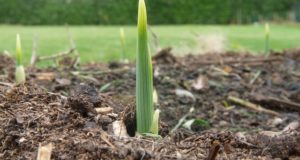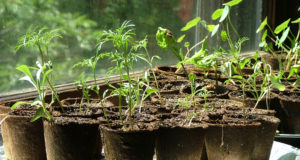Straw bale gardening is simply what it sounds like: growing a garden in bales of straw. It offers many advantages that aren’t typically available in most in-ground traditional gardens, or even in some raised bed gardens.
Before we look at tips for straw bale gardening, let’s first take a look at its advantages:
1. You can grow in a variety of places where it isn’t practical to grow a traditional garden. A straw bale garden can be grown on permafrost, on concrete or even on rooftops!
This gardening method is also a great way to grow a garden when you first move into a new home but haven’t had the time or the resources to do any soil tests, add any soil amendments, or construct a wooden raised bed garden.
2. You don’t need garden space! The straw bales are essentially your raised bed, your growing medium, and your growing container all in one. This allows you to produce a very productive garden, even when you have very limited (or no) garden space.
Looking For Non-GMO Seeds For Your Garden? The Best Deals Are Right Here!
3. You get an early start on the gardening season. Straw bale gardeners have the advantage of being able to plant their vegetable gardens several weeks earlier than a traditional in-ground garden. Not only do you not need to wait for the ground to thaw when planting in straw bales, but the process of preparing the bales warms up the growing medium, as microbes actively generate heat when they break down the organic matter in the bales.
Of course, you can cover your garden to protect it from any remaining spring frosts.
4. You can grow plants and produce rich compost at the same time. Because you are growing a garden in organic matter itself, you will get extremely rich compost at the end of the gardening season that you can then use for any future gardening activities.
5. You can safely garden even when you have poor or toxic soil. Because you are not growing directly in soil, you can grow a completely organic garden in straw bales without any concerns of lead or other toxins contaminating the food that you are growing. Straw bale gardens are ideal for urban landscapes, where the soils have been subject to a plethora of pollutants that can make growing a healthy in-ground garden challenging.
6. You can grow organically … easily. Unlike traditional in-ground gardens, it isn’t necessary to add all kinds of soil amendments to build good quality garden soil. You will have rich organic garden “soil” immediately after preparing the bales. A straw bale garden is an ideal method for brand new gardeners to learn basic gardening processes with reduced weeding and watering needs.
7. You can garden in 3D! You can grow plants on the top, ends, and on the sides of your bales, maximizing available garden space. You don’t generally have this advantage when growing in the ground or even in a traditional raised bed garden.
8. You can pick your garden’s shape! You can arrange your straw bales for your garden in a variety of shapes, such as a horseshoe shape or a keyhole bed shape to allow for easy access for planting, maintenance and harvesting.
9. You can garden with no weeding! Growing a garden in straw bales is like having fresh and clean new potting soil without any weed seeds present. This dramatically reduces opportunities for weeds to grow in your garden, eliminating most of the maintenance work for gardening!
Seamazing: The Low-Cost Way To Re-mineralize Your Soil
10. You reduce the need to bend over when you garden. Because of the raised bed nature of straw bale gardens, you won’t need to bend over nearly as much to tend to your garden, compared to when you garden in the ground.
11. You reduce the need to water. Straw soaks up water, reducing the amount of watering that your garden should require throughout the season.
12. You can grow both transplants and seeds. However, you will need to add potting soil first when planting seeds in your straw bales.
Straw Bale Gardening Tips
1. Make sure that you grow a straw bale garden using straw, not hay, as hay contains many seeds that will sprout in your garden.
2. Attend a workshop, read a book or watch videos about how to grow a straw bale garden. This information will help you to properly prepare the bales for planting and how to maintain them throughout the growing season. Highly recommended is the Straw Bale Gardens book by author Joel Karsten. Also be sure to check out the official Straw Bale Gardens website for more information!
3. Preparation of the bales takes approximately two weeks before you can plant any transplants or seeds in the bales. It involves soaking bales with water and adding nitrogen. Watch the video below for details:
4. During the initial two-week stage of bale preparation, you may have mushrooms that start growing out of your straw bales. While this is an excellent sign that the organic materials in the bales are breaking down properly and will be very healthy for your garden plants, there may be a temporary odor associated with your straw bale garden. Keep this in mind when deciding where to set up your garden.
Have you ever gardened using straw bales? What advice would you add? Share it in the section below:
Every Spring, Gardeners Make This Avoidable Mistake — But You Don’t Have To. Read More Here.
 Off The Grid News Better Ideas For Off The Grid Living
Off The Grid News Better Ideas For Off The Grid Living





